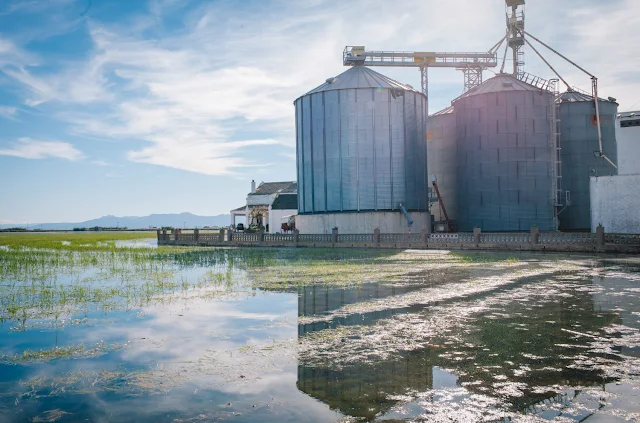As an advocate for sustainable living, I've always been captivated by the idea of turning waste into wealth. Biogas technology epitomizes this concept, offering a reliable and eco-friendly solution for generating renewable energy from organic waste materials. In this blog post, I invite you to join me on a deep dive into the world of biogas technology, exploring its potential to transform waste management while providing a clean and sustainable energy source.
Embracing the Potential of Biogas
Biogas technology holds immense promise in our quest for renewable energy solutions. Here's why it's capturing the attention of eco-conscious consumers:
- Utilizing Organic Waste: Biogas systems convert various organic materials, such as agricultural residues, food scraps, and animal manure, into valuable energy sources, reducing reliance on fossil fuels.
- Clean Energy Production: Biogas production releases fewer greenhouse gas emissions compared to traditional waste disposal methods, contributing to climate change mitigation efforts.
- Circular Economy Approach: By closing the loop on waste management, biogas technology promotes a circular economy model, where organic waste is repurposed to generate energy, fertilizer, and other valuable byproducts.
The Mechanics of Biogas Production
At its core, biogas technology relies on the natural process of anaerobic digestion to break down organic matter and produce biogas. Here's how it works:
- Feedstock Preparation: Organic waste materials are collected and prepared for digestion, including shredding or mixing to optimize decomposition.
- Anaerobic Digestion: The prepared feedstock is placed in an airtight digester, where anaerobic bacteria break down the organic matter in the absence of oxygen, releasing biogas as a byproduct.
- Biogas Collection: The biogas produced, primarily composed of methane and carbon dioxide, is collected and stored for use as a renewable energy source.
- Utilization: Biogas can be used for various applications, including electricity generation, heating, cooking, and transportation fuel, providing a versatile and sustainable energy solution.
Navigating the Biogas Landscape
Implementing a biogas system requires careful planning and consideration of various factors. Here are some key considerations for those interested in adopting biogas technology:
- Feedstock Availability: Assess the availability and composition of organic waste feedstock to determine the feasibility of biogas production.
- System Scale: Choose an appropriate scale for the biogas system based on energy needs, feedstock availability, and available space.
- Technology Selection: Explore different types of biogas digesters and gas utilization systems to find the most suitable option for your specific requirements.
- Regulatory Compliance: Familiarize yourself with local regulations and permitting requirements related to biogas production and waste management to ensure compliance and avoid potential issues.
Conclusion Embracing a Sustainable Energy Future with Biogas
In today's global landscape, the urgency to address both waste management and climate change has never been more pressing. Biogas technology stands out as a beacon of hope amidst these challenges, offering a multifaceted solution that aligns with our aspirations for a cleaner, greener future. At its core, biogas technology represents a paradigm shift in how we perceive and utilize organic waste. Rather than viewing waste as a burden to be disposed of, we recognize its potential as a valuable resource for renewable energy generation.
By harnessing the power of organic waste through biogas technology, we unlock a myriad of environmental benefits:
Renewable Energy Generation: Biogas production allows us to tap into a sustainable energy source derived from organic materials that would otherwise contribute to landfill emissions. This renewable energy can then be utilized for electricity generation, heating, or even as a transportation fuel, reducing our reliance on finite fossil fuels and mitigating greenhouse gas emissions.
Greenhouse Gas Reduction: The anaerobic digestion process employed in biogas production helps to break down organic waste in an oxygen-free environment, minimizing the release of methane—a potent greenhouse gas—into the atmosphere. By diverting organic waste from landfills and capturing methane emissions for energy use, biogas technology plays a crucial role in mitigating climate change.
Circular Economy Promotion: Biogas technology embodies the principles of a circular economy, where resources are kept in use for as long as possible, with waste being transformed into valuable inputs for other processes. By repurposing organic waste to generate energy and nutrient-rich byproducts like digestate, biogas systems contribute to a closed-loop approach to resource management, minimizing waste and maximizing resource efficiency.
In embracing the potential of biogas technology, we embrace a vision of a more sustainable energy future—one where waste is no longer seen as a liability but rather as a valuable asset. By prioritizing environmental stewardship and innovation, we can pave the way towards a world where organic waste becomes a cornerstone of renewable energy production, and where sustainable practices guide our path towards a brighter tomorrow. Join me in championing the transformative power of biogas technology as we strive to build a more resilient, resource-efficient, and environmentally conscious society.



Post a Comment
0Comments